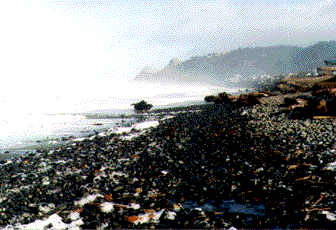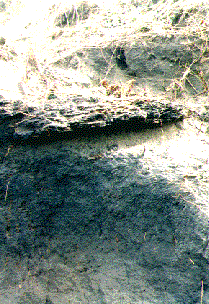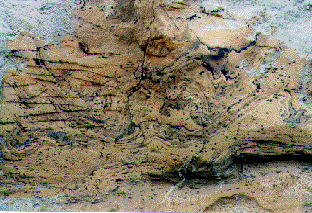| The winter surf has eroded the sands from the foreshore and backshore leaving the heavier cobbles and pebbles. The sands that are found here are not well sorted. They are a mix of quartz, black (basalt, biotite,and magnetite), and agates.The mineral resource for these sands is the Columbia River about 100 miles to the north. |

|

|
The surf has cut a sea cliff erosional pattern in the old backshore. There is a dark crumbly layer between layers of sand here. It is peat deposited from a flood, perhaps, from the forest above. This peat has been buried by beach build-up. Some cross bedding can be seen in the upper backshore. The foreshore is laminar and more resistant to erosion. |
| By scraping the face off the beach cliff face, the distinct patterns of sand layers become visible. Convoluted bedding, mixtures of sand and soils can be seen in the layering of these sands, indicative of seismic disturbances. Earthquakes have caused an upwelling of liquified sand mixtures to intrude into the layers of sand like a plutonic intrusion. This is a clastic dike. There have been three earthquakes recorded at this site. |

|
Created by STANLEY R. SANDERS, 1999
e-mail: sanders@transport.com